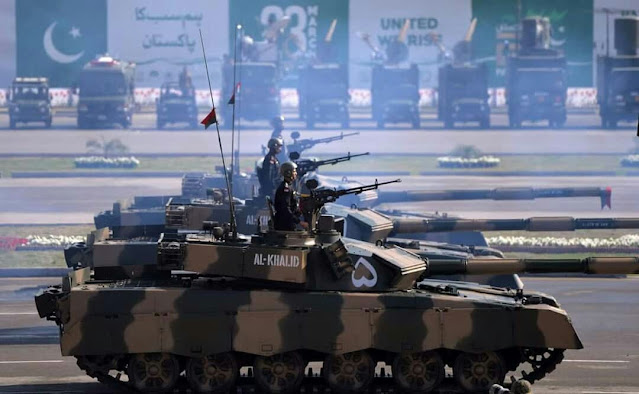The Bread and Butter of Nigerian Air Force Future Fighter Fleet : JF-17
Nigeria is emerging as the new dominant regional power within West Africa, the country holds one of the largest natural resources reserves in the world and currently boasts the largest population in Africa. Hence law makers are looking to further expand and modernize Nigerian industries and institutions, this of course includes the Nigerian Armed Forces. Evidence of this modernization drive can already be seen as not long ago the Nigerian Army procured a handful of Chinese VT-4 tanks and recently 3 JF-17 multi role fighters from Pakistan amid celebrations marking the 57th anniversary of the service. Furthermore, numerous sources have stated that Nigerian Air Force now intends to acquire two entire squadrons comprising of JF-17 which will replace the J-7 and become the bulk of Nigerian Airforce fighter fleet.
If this modernization plan is materialized Nigeria will properly join the club of countries which operate 4+ Generation warplanes and have Beyond visual Range engagement capability becoming a dominant air force in the region, but more importantly than that, the Nigerian Armed Forces will acquire a potent multirole platform which can use a variety of precision guided and unguided munitions to help in the war against Baku Haram. The NAF will be able to conduct precision airstrikes on high valued targets while simultaneously conducting real time reconnaissance, something for which it had to rely on trainer jets such as M-346 until now. This is because the JF-17 Thunder block 2 is a complete package/multirole fighter jet which can carry following armaments
Air to Air Armaments
- PL-15 VLRBVRM (Will be integrated with Block-3) (Effective Range= 200-250 Km)
- PL-12/SD-10 BVRM (Effective Range= 100+ Km)
- PL-10 WVRM (will be integrated with Block-3)
- PL-5EII WVRM
Air to Ground Armaments
- Various Unguided Bombs.
- Guided Bombs including LGBs, PGBs & Stand Off Weapons.
- Anti-Radiation Missiles (LD-10 & MAR-1)
Anti-Ship Armaments
- C-802AK
- CM-400AKG
Hence this platform would be a massive leap forward for the Nigerian airframe if the 2 squadron plans is materialized and this is assuming that the Block 2 variant is pursued. If it is the Block 3 variant of JF-17 Nigeria procures in the future, it will seal the deal of making the Nigerian Air Force the most capable in the west African region for many years going forward due to notable upgrades which boost its operational range and capability considerably. Overall, the plan to increase JF-17 fleet size to two squadrons rather than induct some other jet is sensible in many ways as the goal of modernization will be achieved while Nigeria can build up the necessary infrastructure to support the platform if it focuses on one plane. It will be much easier to maintain and service the jets while the munitions and spare parts stockpiling can be standardized more efficiently. Over all it seems the NAF has set its eyes on the JF-17 as the future and will expand further to become the most modernized air force in the West African region.



Comments
Post a Comment